Steady-state thermal analysis¶
This example shows you how to conduct a 3D static thermal analysis for an assembly. Steady-state thermal analysis uses FrontISTR as the default solver. It also supports using CalculiX or Elmer FEM as a solver.
Selecting units¶
In the beginning, we select the MKS unit system for the subsequential simulation. Clicking Preferences from the Toolbar or Menu, and setting the Metric (kg, m, s, A, N, V). 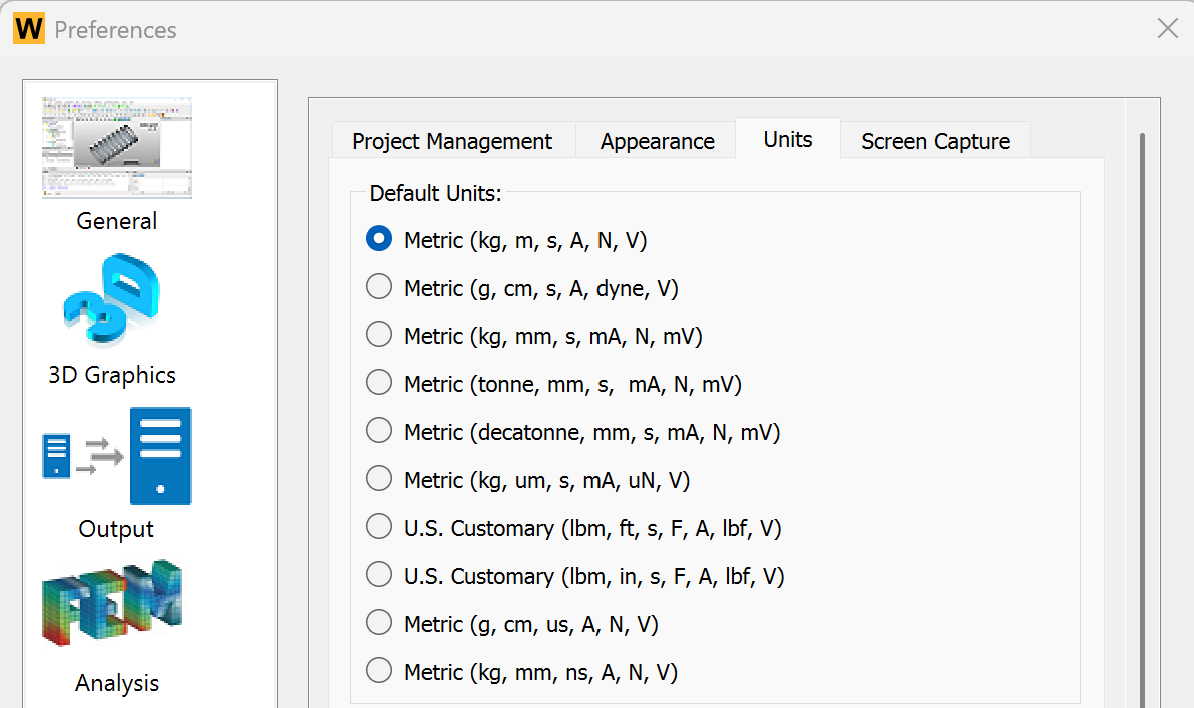
Defining materials¶
In this multi-body analysis, we assign Structural Steel and Aluminum materials to different parts. Since a Structural Steel object is already added as you initialize a FEM Project, you only need to insert an aluminum material object by clicking Add Material from Toolbar or FEM Menu.
To edit the material properties, you can double-click the Material object, or right-click on the Material object and select the Edit command from the context menu. In the material editor, you select the Library tab > General Materials > Aluminum Alloy, then click Import button or double-click the Aluminum Alloy entry. The material properties are set as shown in Figure below. Click the OK to save and exit the material editing.
You can rename this new material object to Aluminum by press F2 key or right-clicking.
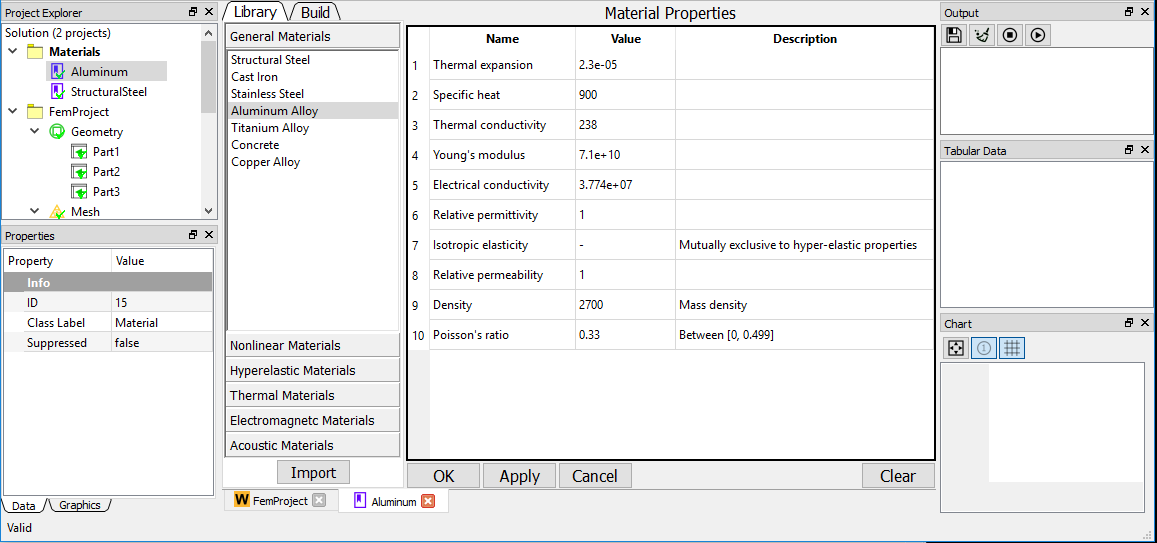
Specifying analysis¶
In the Properties View of the FEM Project object, you set the Physics Type property to Thermal. A Steady-State Thermal analysis is defined as shown in Figure below.
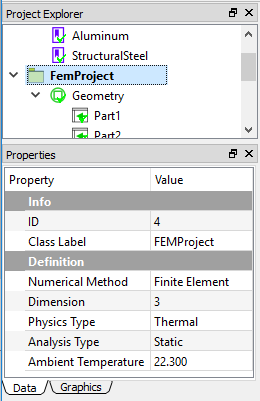
Preparing geometry¶
Next, you can import the geometry file “h_section_multibody.step” and assign the materials to the corresponding parts. As shown in Figure, three Part objects in the Geometry group represent three bodies in the Graphics window, respectively. You assign the Aluminum material to the Part2, which is the connection body in the middle, the rest bodies are assigned with Structural Steel material.
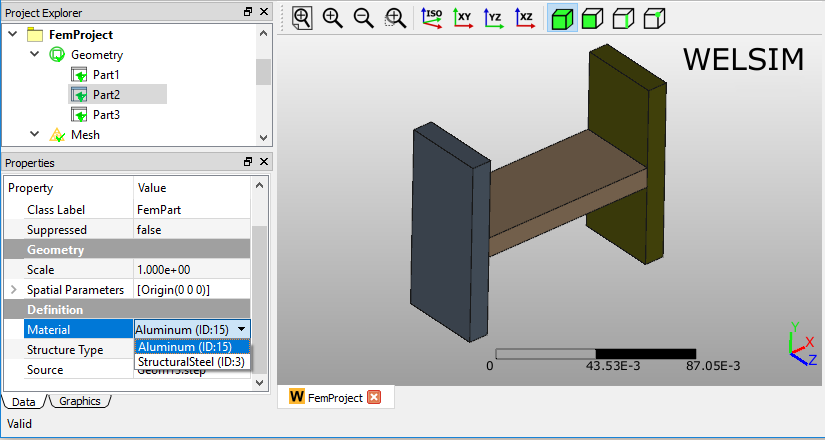
Setting mesh¶
To obtain a fine mesh for the analysis, you set the Mesh Settings properties Quadratic to True, and Maximum Size to 3e-3.
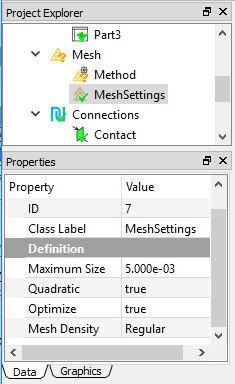
Clicking the Mesh command from the Toolbar or FEM Menu, you can mesh the geometries. There are 42,329 nodes, and 25,920 Tet10 elements generated.
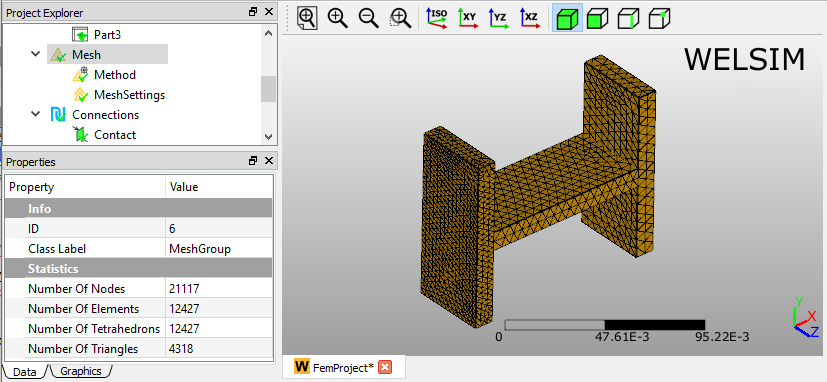
Specifying contacts¶
Next, you need to define two Contact Pairs to bond the three parts into one uni-body for the analysis. Clicking the Add Contact command from the Toolbar or FEM Menu, you add two Contact Pair objects into the tree. You can rename these two objects to Contact1 and Contact2, respectively. Then you select the surfaces for Master and Target Geometry properties.
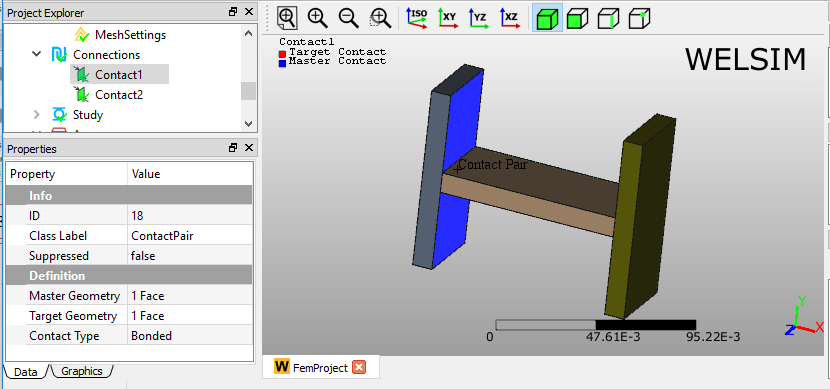
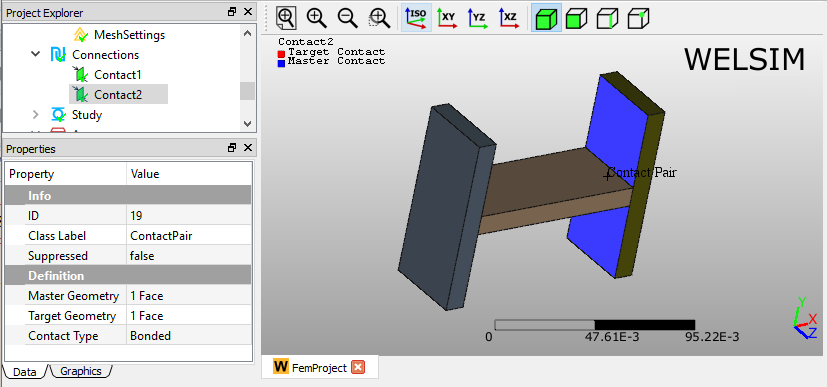
Imposing boundary conditions¶
Next, you impose four boundary conditions, a Temperature, Heat Flux, Convection, and Radiation by clicking the corresponding commands from the Toolbar or Thermal Menu. In the Properties View of the Temperature object, select a left bottom surface for the Geometry property and set the Temperature value to 0, as shown in Figure below.
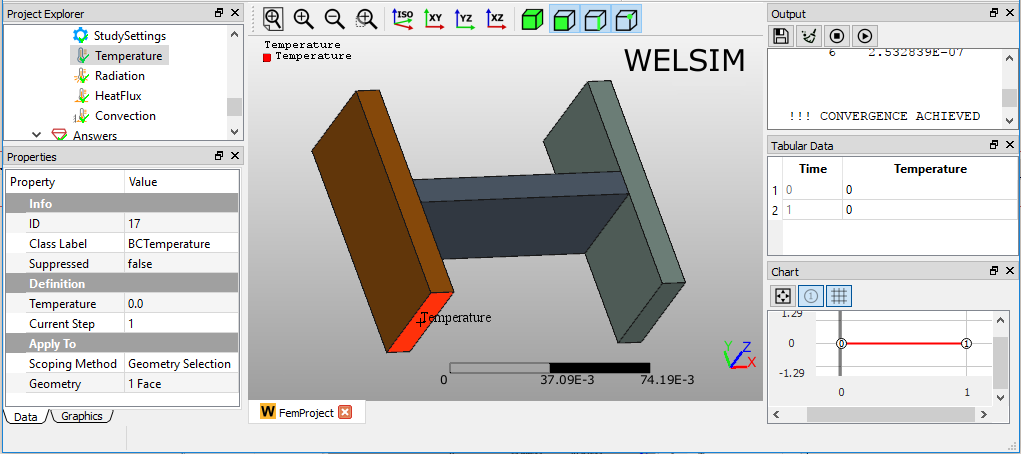
In the Properties View of Heat Flux object, set the Heat Flux value to 5e3, and scope a surface for the Geometry property, as shown in Figure below.
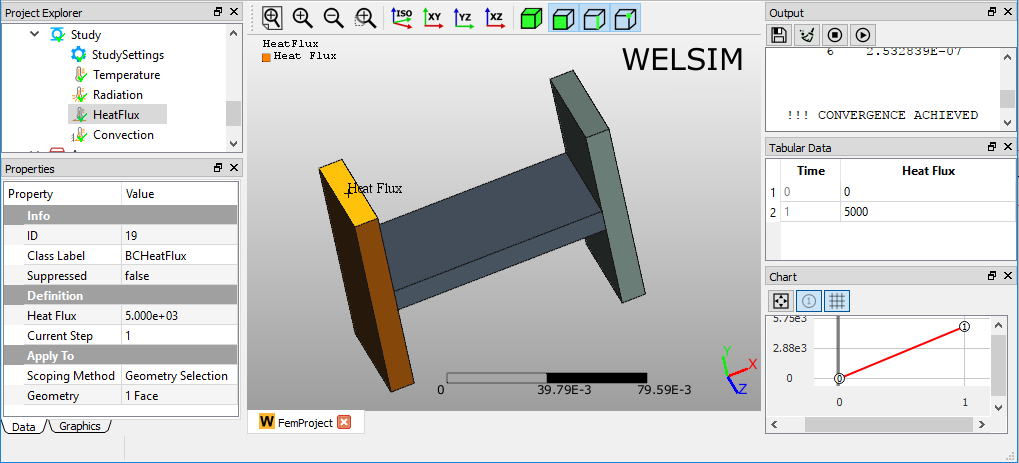
In the Properties View of Heat Radiation object, set the Radiation Coefficient value to 1e-6, Ambient Temperature value to 22.3, and scope a surface for the Geometry property, as shown in Figure below.
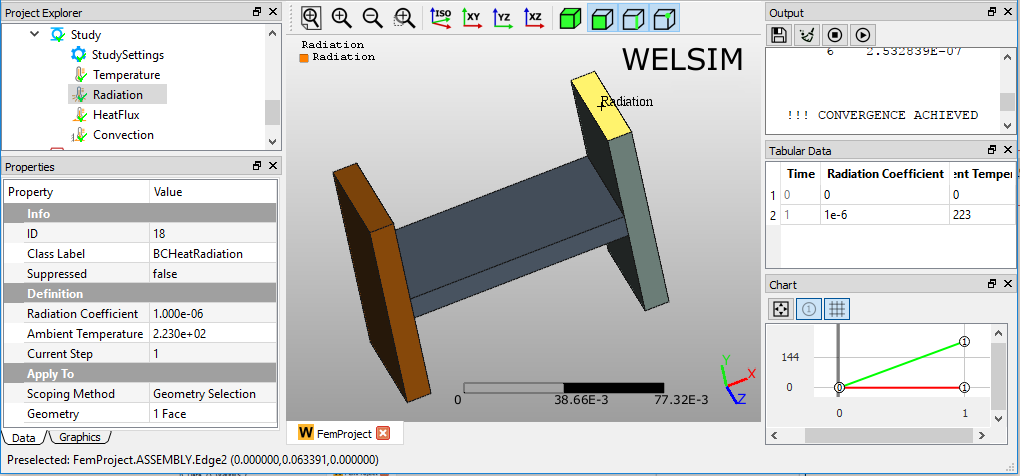
In the Properties View of Heat Convection object, set the Convection Coefficient value to 1e3 and Ambient Temperature value to 22.3, and scope a surface for the Geometry property, as shown in Figure below.
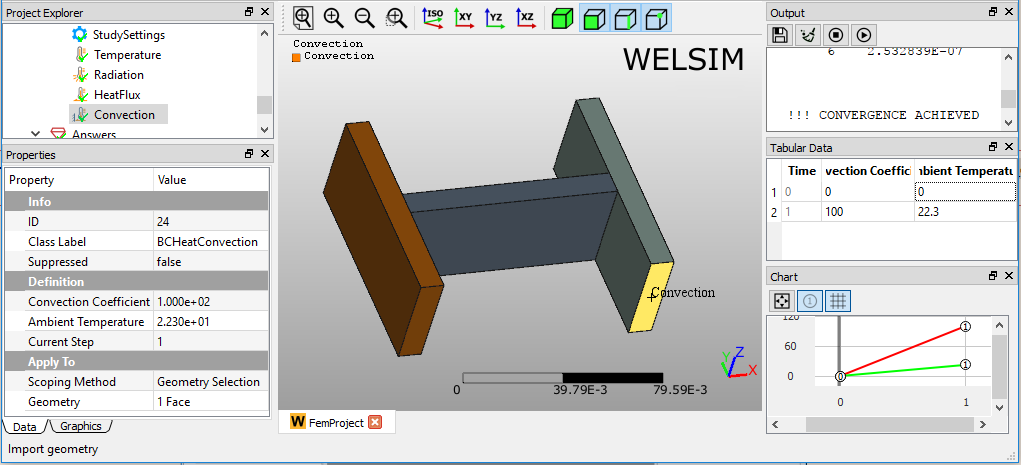
Solving the model¶
To solve the model, you can click the Compute command from the Toolbar, FEM Menu, or right-click on the Answers object and select Compute command from context menu. Depending on the complexity of the model, the solving process can be completed in seconds to hours. The Output window displays the solver messages and indicates the status of the solving process. As shown in Figure below, this model is solved successfully.
Evaluating results¶
To evaluate the deformation of the structure, you can add a Temperature object to the tree by clicking the Temperature item from the Toolbar or Thermal Menu. Next, double-clicking the result object or clicking the Evaluate item from the Toolbar or FEM Menu, you display the result contour in the Graphics window as shown in Figure below.
